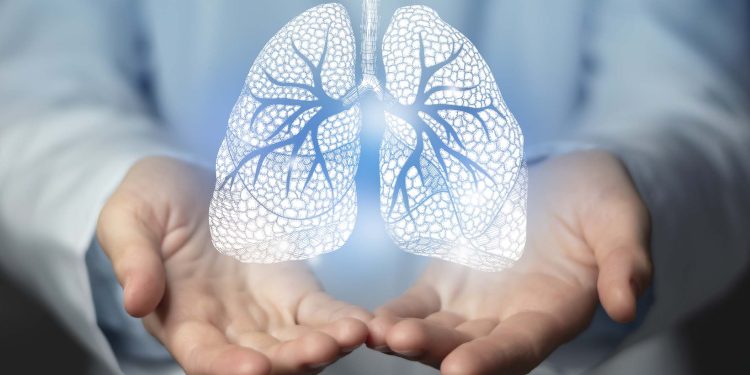Chronic obstructive pulmonary disease (COPD) is the third most common cause of disease-related death in Americans, even though it is often preventable by not smoking. If you are living with COPD, you should know that there are treatments available that can make life easier.
What is COPD?
COPD is the term used to describe any progressive lung disease that leads to increasing breathlessness. The most common types of COPD are chronic bronchitis and emphysema. Most COPD patients have a combination of these two conditions.
COPD causes less air flow in and out of the lungs because of one or more of the following:
- The airways and air sacs lose their elastic quality.
- The walls between many of the air sacs are destroyed.
- The walls of the airways become thick and inflamed.
- The airways make more mucus than usual, which can clog them.
“The most common symptoms are shortness of breath, chronic cough and excessive mucus,” said Sandeep Bansal, MD, FCCP, FACP, Medical Director of The Lung Center at Penn Highlands Healthcare. “Severe cases may prevent you from doing even basic activities such as walking, cooking or caring for yourself. If you have COPD symptoms at any age, you should talk to your primary care provider about being tested. COPD can be diagnosed with a simple test called a spirometry, which measures how much air you breathe in and out, as well as how quickly you breathe out.”
The vast majority of COPD is caused by inhaling pollutants. Tobacco smoke is the most common pollutant, but others can include dust, asbestos, carbon monoxide, chemical fumes and mold. People who do not smoke are most likely to develop COPD if they work or worked around toxins for many years. Sometimes people get COPD who have never smoked or been exposed to toxic amounts of pollutants. These people likely have a genetic predisposition for the disease, meaning their risk was passed down from their parents.
How is COPD treated?
Although there is currently no cure for COPD, many treatments are available that can help reduce your symptoms so that you can live a more active life. The goals of COPD treatment usually include slowing the progress of the disease, improving your exercise tolerance, preventing and treating complications and improving your overall health.
Your treatment options will depend on the type of COPD you have and its severity and may include:
- Medication in a pill, inhaler or nebulizer
- Pulmonary rehabilitation with education and exercise
- Supplemental oxygen
- Surgery (for severe cases)
Your provider may also recommend a Zephyr Endobronchial Valve, an innovative treatment for patients with severe emphysema who feel short of breath all the time, even when using COPD medications or oxygen.
“The Zephyr Valve is a minimally invasive device that can be implanted without any incisions,” said Dr. Bansal. “Four tiny valves are placed in the airways to block off the diseased parts of the lungs. The valves work by reducing hyperinflation, preventing air from being trapped in the diseased area of the lung and allowing healthier parts of the lung to take in more air.”
How can I manage my COPD?
It is possible for people with COPD to live full, satisfying lives as long as they properly manage their condition. Your provider will help you devise a care management plan specific to your needs. It may include:
- Quitting smoking
- Losing weight
- Exercising
- Eating smaller, more frequent meals
- Getting a flu shot
The experienced pulmonologists and respiratory therapists at The Lung Center at Penn Highlands offer treatments to help ease the symptoms of COPD. The Lung Center is the first facility in the region to offer the Zephyr Endobronchial Valve. In addition, the physicians and providers are highly skilled in treating all types of lung conditions including asthma, emphysema and lung cancer. For more information, visit www.phhealthcare.org/lungcenter.




